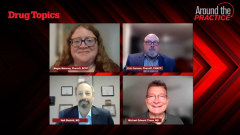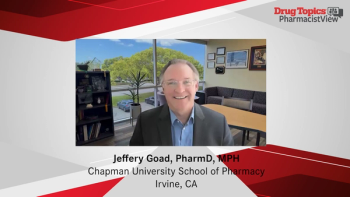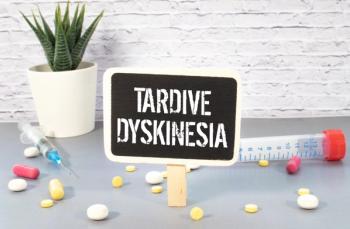
Clinical and Economic Burdens Impacting Patients with TRD
Michael Edward Thase, MD, leads a discussion surrounding an array of challenges impacting patients with treatment-resistant depression.
Episodes in this series

Megan Maroney, PharmD, BCPP: Dr Thase, what about comorbidities? What comorbidities are common in patients with TRD [treatment-resistant depression]?
Michael Edward Thase, MD: We talked about substance use. You need to know what substances your patient is using—how often, how much. Enter an agreement for them to reduce their use of alcohol and drugs as part of the treatment plan. It’s not possible to treat someone effectively if they’re drunk or loaded almost every day. A common 1 among younger patients is ADHD [attention-deficit/hyperactivity disorder]. Growing up with attention and school performance problems is a risk factor for depression, and there may also be some inherited comorbidity between ADHD and some forms of depression. In the modern world, you need to be well versed in managing stimulants along with antidepressants. For some antidepressants, a stimulant can increase the risk of blood pressure or amplify the risk of anxiety or insomnia as an adverse effect. That’s common.
This isn’t exactly comorbidity, but we haven’t talked enough about this today. About 10% of our patients with depression have illnesses that fall within the bipolar spectrum. This doesn’t necessarily mean they’ve had a manic episode or even a mild or hypomanic episode, but there are things about their illness that are suggestive of or typical of bipolar disorder than regular recurrent depression. That patient may need to be treated as if they have bipolar disorder, with a mood stabilizer as the adjunctive medicine in addition to an antidepressant. Some of the newer-generation antidepressants function like mood stabilizers, so you can add them as an adjunct for the antidepressant effect and then continue it on—maybe even as a monotherapy—to help the patient have a lower risk of relapse over time.
Megan Maroney, PharmD, BCPP: Some patients have mixed features.
Michael Edward Thase, MD: Yes.
Megan Maroney, PharmD, BCPP: This next question is for everyone. I’ll start with Dr Thase, then Dr Skolnik, and then Mr Cannon at the end. What are some of the financial impacts associated with depression and TRD in particular? How does the cost of treating it compare with the cost of treating regular depression, and what are some of those indirect costs?
Michael Edward Thase, MD: Mr Cannon knows these numbers better than I do, but my understanding is that patients with difficult-to-treat depression account for two-thirds or even three-quarters of the total treatment cost expended on all patients with depression. In the parlance of health economics, these patients are high service utilizers and high consumers of health care resources. When you can identify and effectively treat someone, you have the profound chance to offset the cost of care with the benefit. This is 1 reason to think of ECT [electroconvulsive therapy], ketamine, esketamine, or TMS [transcranial magnetic stimulation], which are more expensive treatments for patients who otherwise aren’t able to get better because they’ll continue to use care and won’t be able to work. Not only are they not contributing and earning the livelihood they might, but they’re also going to emergency department, seeing doctors, and so forth.
Neil Skolnik, MD: I agree. The direct costs are large because things like TMS are expensive. But the indirect costs are larger. These are individuals who are having trouble at work. Dr Thase mentioned both absenteeism and presenteeism, and both have costs that are definable at work but also to the patient and their family. That’s harder to put a number on, but it’s very large. Eric?
Eric Cannon, PharmD, FAMCP: You hit on it. Those direct costs exist within the health care system, and there isn’t a lot of good research. There was a database study done in 2019 that looked at it, and it was about a $3000 difference per year. Almost $10,000 vs $6000. The direct cost is different, but the indirect cost is significant. The problem with the direct cost is that if I lose my job, I can’t pay the direct cost. Not only am I faced with something that’s probably going to make me more depressed, but I also can’t afford the treatment now that I need to get better.
The other economic piece to this is that patients who’ve been treated for depression responded well. They’re not going to show up in the emergency department. They’re not the ones for whom we’re going to send someone to their home to do a wellness check. All those things factor into it. As a society, we don’t do a good job looking beyond the direct cost. The direct cost is there. There are a lot of things that cost a lot more money than treating depression. We need to factor in those societal costs and how we get patients to feel better, so they can be productive.
Megan Maroney, PharmD, BCPP: Mr Cannon, how can pharmacists, payers, and providers assist with the financial impact associated with TRD?
Eric Cannon, PharmD, FAMCP: We’re looking at providing patients with several options within the benefits we sell. We’ve got a lot of plans that individuals can buy. Patients may have a different option. If my co-pay for a generic drug is $20, how do I do this in such a way that I don’t have to pay $20 but can get on a lower-cost antidepressant that costs $4 or $5? We’re looking at options. Mark Cuban’s Cost Plus Drug Company provides options. The Amazon RxPass—5 medicines for $5 a month—is incredible. How do we get those things out there and help patients understand what’s available?
Megan Maroney, PharmD, BCPP: Dr Thase, do you have anything you’d like to add? Is there anything pharmacists, payers, and providers can do to assist with the financial impact of TRD?
Michael Edward Thase, MD: My end of this is to stay on top of prescribing the medicines that I think would be the most effective and useful for a particular patient, to pick the 1 that is the best value at the lowest price. If all other things are equal, the advantage should go to that. If you think about our favorite expensive branded medicines 15 years ago, some have become our favorite generic antidepressants 15 years later. I’ll be judicious in terms of prescribing branded, more expensive medications. There are some occasions where it’s worth the fight through the prior authorization process.
Eric Cannon, PharmD, FAMCP: One thing is that pharmacist can be helping. Unfortunately, in a lot of retail pharmacies today, I don’t know if pharmacists have that opportunity to know and understand their patients. I haven’t worked in a retail pharmacy for about 25 years, and that was the neighborhood where I grew up. I understood the patients. I called physicians, saying, “I’m getting ready to fill this, but I know they can’t afford it.” The relationship that exists between a pharmacist and a patient can be impactful if the pharmacist takes time to listen and be proactive, making sure that what they’re delivering to the patient meets their needs.
Megan Maroney, PharmD, BCPP: Absolutely. Some branches of retail pharmacies don’t have the time. Of course, there are other factors we have to consider. I’m lucky enough in my environment to be able to have that kind of relationship with patients, so I can work with them. That’s a huge factor. Is this going to be affordable, or can we come up with a better, more cost-effective option?
Transcript edited for clarity.
Newsletter
Pharmacy practice is always changing. Stay ahead of the curve with the Drug Topics newsletter and get the latest drug information, industry trends, and patient care tips.




































































































































